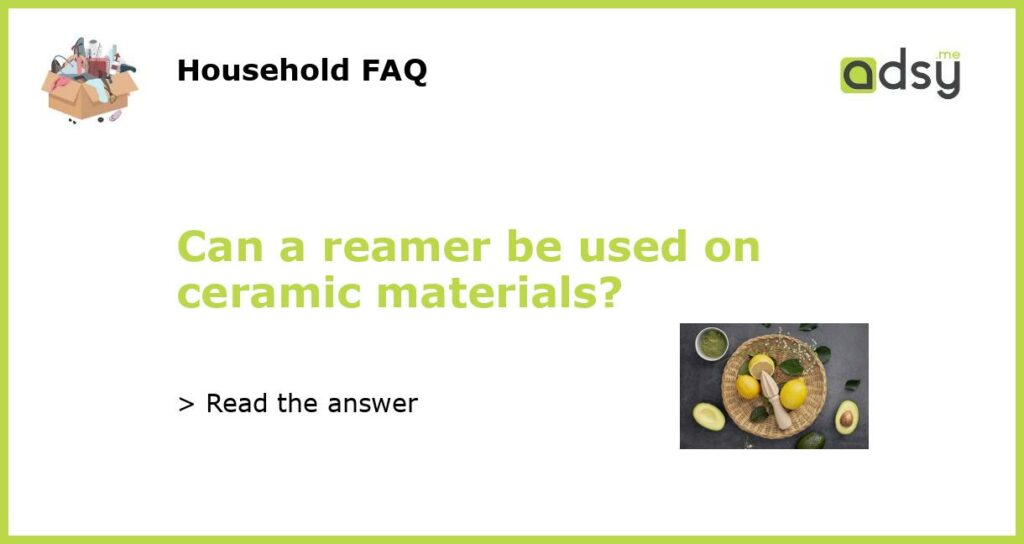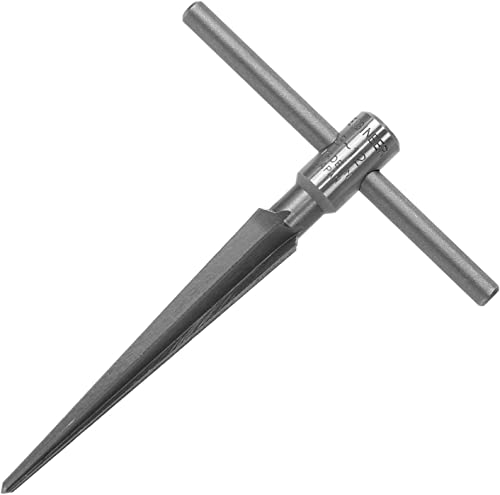Yes, a reamer can be used on ceramic materials
Ceramic materials are known for their hardness and brittleness, which can make them challenging to work with. However, with the right tools and techniques, it is possible to cut, shape, and drill through ceramic materials. One tool that is commonly used for machining ceramics is a reamer.
What is a reamer?
A reamer is a cutting tool that is used to create smooth, accurate holes in a variety of materials, including metals and ceramics. It is typically used after a hole has been drilled or bored to remove any rough edges or imperfections and ensure a tight, precise fit for bolts, screws, or other fasteners.
How does a reamer work on ceramic materials?
When used on ceramic materials, a reamer works by gradually enlarging and smoothing out a pre-existing hole. It has multiple cutting edges, typically in the form of straight or spiral flutes, that remove small amounts of material with each pass, creating a hole that is more uniform in size and shape.
It is important to note that drilling or boring a hole in ceramics can be challenging due to their hardness and fragility. These materials have a tendency to chip or crack under pressure, especially if they are not properly supported or lubricated during the machining process.
Important considerations when using a reamer on ceramic materials
When using a reamer on ceramic materials, there are several important considerations to keep in mind:
- Use the right reamer: Not all reamers are suitable for use on ceramics. It is important to select a reamer that is specifically designed for cutting ceramic materials.
- Select the correct speed and feed rate: The speed and feed rate at which the reamer is used can greatly impact the success of the machining process. It is important to use the appropriate speed and feed rate for cutting ceramics to avoid chipping or cracking.
- Support the material: Ceramic materials should be properly supported during the machining process to minimize the risk of chipping or cracking. This can be achieved by using a vise or clamp to secure the material in place.
- Use appropriate cooling/lubrication: Cooling or lubricating the ceramic material and the reamer can help to reduce friction and heat buildup, which can contribute to chipping or cracking. Water-soluble cutting fluids or lubricants specifically designed for ceramic machining can be used.
- Take proper safety precautions: It is important to wear protective eyewear, gloves, and other safety equipment when working with ceramic materials to avoid injury.
The benefits of using a reamer on ceramic materials
Using a reamer on ceramic materials can offer several benefits:
- Improved hole accuracy: Reaming can help to create holes that are more precise in terms of size and shape, resulting in a tighter fit for fasteners.
- Smooth hole surface: Reaming can remove any rough edges or imperfections, leaving behind a smooth hole surface.
- Increased productivity: Using a reamer can help to speed up the machining process by reducing the need for additional drilling or finishing operations.
- Extended tool life: Reamers that are specifically designed for ceramic machining are typically made of high-speed steel or carbide, which offer greater durability and longer tool life compared to standard reamers.
- Versatility: Reamers can be used on a wide range of ceramic materials, including porcelain, alumina, zirconia, and silicon nitride.






